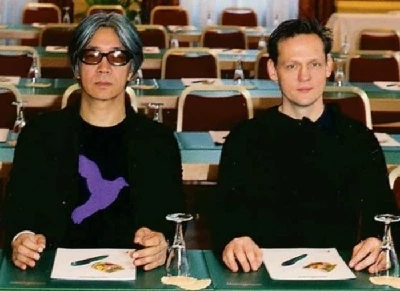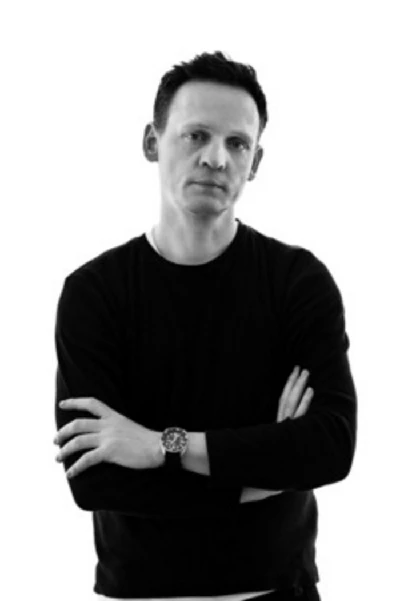published: 20 /
3 /
2011

Alva Noto is a German sound designer who has worked with composer Ryuichi Sakamoto on five albums, as well as put out dozens of records of his own. He talks to Lisa Torem about his and Sakamoto's work together, and their latest project which will be premiered in London in May
Article
“I am stunned by the power of nature, the vastness of the damage and the feebleness of humanity,” states Ryuichi Sakamoto, the Japanese, Academy-Award winning pianist and composer of soundtracks and semi-classical piano pieces, on his website after the recent Japanese earthquake catastrophe. During times like these, it is often the artist who rises above the chaos to bring us hope.
German sound designer, Alva Noto, the moniker of Carsten Nicolai, has collaborated with Ryuichi, since the early part of the millennium and also sees the power of music; how it brings the audience together, often using the most simple of sounds to create intimacy and promote meaning.
Noto’s compositions are created by looping oscillators and tone generators. Ordinary workplace sounds, such as fax tones and everyday street impressions, are often incorporated into his works. The final product results in “microscopic views of creative processes,” according to Wikipedia.
Since the mid 1990s, Noto has produced dozens of EPs and CDs on the Raster-Noton label, which he co-founded. He also performs with Signal with Frank Bretschneider and Cyclo with Ryoji Ikeda. Compelled as well by the marriage of visual arts and music, he has created dozens of installations which have appeared at the Guggenheim, MoMa, NTT Tokyo, and Tate Modern museums.
At the upcoming Short Circuit Electronic Musical Festival at London’s Roundhouse, Ryuichi Sakamoto and Alva Noto will premiere their most recent work. But, like any great duo, they plan to maintain an aura of mystery until the time of the event.
PB: Both you and Ryuichi Sakamoto have collaborated since 2002. On the 2005 collection, ‘Insen’, compositions like ‘Aurora’, ‘Morning’ and ‘Logic Moon’ appear. They include dramatic arpeggios, sustained notes and express various moods.
How does your audience interpret these pieces?
AN: Interesting question. I don’t know actually. The best way is probably to enjoy them and, yeah, what can I say (Laughs)? I have no idea how people are interpreting these pieces.
PB: Alva, you were obsessed with bats as a child. Some artists have written songs specifically for dogs with their high-pitched hearing. Does this type of work intrigue you?
AN: The story of the bats expresses maybe one thing that I’m really interested in – sound first of all and not really music. I’m really interested in frequencies outside of our hearing and maybe that’s one of the main reasons I started involving obsidoscopes in order to see if the sound still exists or if we just imagine it’s existing. Then I really did a lot of research specifically on high frequencies and how they affect us and how they affect our behaviour in nature or how we perceive them and if they are perceptible, maybe not by hearing, but by our sensibilities.
PB: Please explain your process for collaborating with Ryuichi. Do you create a parallel world or do you anticipate his interpretations or themes?
AN: I think every album is very much his own topic and some are really biographical. The first one, ‘Vrioon’,(2002) was stretched out over more than a year and a half and mainly composed by exchanging files. The second one, ‘Insen’ was created in a similar vein, but I composed a lot of it in California and in a villa called Villa Aurora. The topic of the album was pretty much provided by the ambience and the atmosphere of that place.
The third album ‘Revep’ (2006), had another topic in that it was set and made in Berlin. We had also become really interested in the editing process. The fourth collaboration was really different because we really had been composing together on the third album, really for the very first time. We sat in a room composing and for the fourth album, ‘utp’, went back to exchanging files, sending back and forth things
We will meet again for the final mixes at the end of this month for our latest album. It will probably have a very biographical resolve, as we recorded a lot of material for it during our tours.
It involves disharmonics and micro tonality, which in a way fits very well with this very sad moment of Japanese history and in a way, it’s reflected a little in this album, too.
PB: What other work will you two plan to do together and separately?
AN: I cannot speak for Ryuichi, but for myself I’m just really intensively working on the forthcoming tour with him and preparation for that tour and that album, so that is my main thing. Maybe later, at the end of the year, we will have some celebrations in the tour for the 15 year anniversary of Raster-Noton .
After that I hope to focus on my solo work after that. One of the main focuses next year will be solo work with a tour and an album.
PB: You will both be premiering a collaborative composition at the Short Circuit Electronic Music Festival at London’s Roundhouse, the weekend of May 12, 2011. This annual, multi-media event attracts people of all ages and incorporates discussion, visual installations and poetry. That said, what do you consider unique about the new piece, and is it likely that you will perform the new composition in a more traditional setting?
AN: I think the piece is new. That’s the first thing (Laughs). I think it’s all new. Probably we will try to play some pieces from our previous albums, but I am not sure about that. We’ll decide at rehearsals, I guess. Basically we will have a stage set-up with people on stage, similar to last time, but we will pretty much have new content for that; so this will be quite interesting, I think.
But, everything will be premiering on that day, so even for us, it’s a premiere. I don’t want to say much more about it, but we would like to perform our original compositions in a more traditional setting after this event takes place. We always, however, try to break with traditions even in traditional venues to make new things.
PB: Thank you.
Picture Gallery:-

